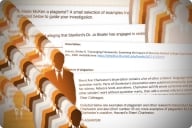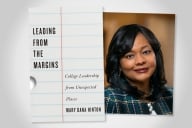You have /5 articles left.
Sign up for a free account or log in.
International education is often seen as an important plank of public diplomacy. By hosting international students, the thinking goes, the U.S. can cultivate goodwill. By educating future leaders, the U.S. can help bring about stronger relations with the countries from which the students come. But is that line of thinking too simplistic? A recent book argues that the large influx of Iranian students to American universities that started in the 1950s and reached a peak of more than 50,000 students in the late 1970s paradoxically subverted the Washington-Tehran alliance at the same time it strengthened it.
Losing Hearts and Minds: American-Iranian Relations and International Education During the Cold War, by Matthew K. Shannon (Cornell University Press, 2017), argues that the large influx of Iranian students into the U.S. had "unintended consequences that ran counter to the strategic objectives of U.S. and Iranian leaders."
"That it did was not the result of any fault in the binational educational project or the free flow of individuals between the United States and Iran, but rather the incongruity of national leaders promoting inherently liberal ideas -- the freedom of movement and global education -- while supporting the illiberal [Shah Mohammad Reza] Pahlavi government," writes Shannon, an assistant professor of history at Emory and Henry College, in Virginia.
On the one hand, Shannon writes, “U.S. policy makers, diplomats, aid officials, philanthropists, and educationalists created a vast array of government-sponsored and nongovernmental educational programs to lay a cultural foundation for the Washington-Tehran alliance and to supply the shah with trained manpower to administer his modernization program, known as the White Revolution.”
On the other hand, international education “also provided a means of resistance. Iranian students abroad produced one of the most impressive oppositional movements of the Cold War era, and their movement expanded in size and diversified in composition over the years as the shah refused to include political liberalization as part of his modernization program. Because the Pahlavi state did not tolerate opposition within its borders, dissent became part of the educational networks that connected the United States and Iran.”
Shannon argues that anti-shah students were able to forge “an alternative alliance with progressive Americans critical of the shah’s authoritarianism. Iranian students and their American allies adopted worldviews that transcended traditional calculations of national interest, served as an alternative power center to national governments, and engaged in an evolving human rights discourse to delegitimize the shah's claim to be a benevolent and modernizing monarch. Their evolving rights-based critique of the Pahlavi state reached the halls of power in Washington and Tehran, reshaped the international community, and contributed to the Iranian Revolution of 1979 that replaced the shah’s Iran with Ayatollah Ruhollah Musavi Khomeini’s Islamic Republic.”
Shannon answered questions about his book and his research -- and the implications for international education more generally -- via email.
Q: What drew you to want to study U.S.-Iranian relations “through the lens of international education,” as you put it?
A: International education has been the most important “connector” in the U.S.-Iran relationship since the 19th century. Yet as I read the literature on U.S.-Iran relations after the Second World War, it became clear that most scholars focus on military, diplomatic and political affairs. I wanted to write about the “cultural cold war” in Iran, which prioritized educational exchanges to the point that, by the 1979 revolution, Iran was sending the largest number of international students in the United States.
The lens of international education integrates various subfields of history that are not always in conversation with the other, which in turn produces a richer picture of the past. In a sense, it is a trifocal lens. Because policy makers conceived of education as a dimension of U.S. strategy, the book speaks directly to older diplomatic narratives on U.S.-Iran relations. Yet, in Iran, education has long been part of a national effort to “modernize” the country and enlarge the umbrella of “rights” for its citizens.
Those efforts were negotiated between Iran and the world, and they sometimes served cross-purposes. In the postwar years, the United States displaced Great Britain and the Soviet Union as the most powerful external actor in Iran. But while some Americans and Iranians saw education as a means of modernizing Iran along an authoritarian model, others saw circuits of exchange as a piece of the international system that would ultimately usher in a freer domestic polity. International education explains, then, the many layers of the binational relationship and the promise and the peril of the postwar American moment in Iran.
Q: What can the U.S.-Iranian example teach us more broadly about both the usefulness and potential limitations of international education as a tool of public diplomacy?
A: I would preface my answer by saying that international education is almost always worth supporting because it can promote American interests and global dialogue in a way that very few endeavors can.
But for international education to be an effective tool of public diplomacy, educational initiatives have to align with the military, political and economic dimensions of the larger strategy. In other words, the various “tracks” of a strategic framework need to be aligned. In the case of Cold War-era Iran, it was counterproductive for the United States to lend tremendous amounts of military support to the shah, a leader who ruled for nearly four decades in a dictatorial manner. The answer was not to curtail the educational programs, but to have focused on political reforms and balanced economic development plans that could have benefited the entire society. Then the educational and cultural exchanges would have taken place in a friendlier context.
I wholeheartedly agree with scholars who argue that the United States should have pursued an “asymmetric” strategy during the Cold War that elevated cultural programs over military alliances. I would say the same about “soft power” in today’s world of wars. Now, as then, some states are freer than others, and some are U.S. allies while others are adversaries. The specifics of the Iranian case during the Cold War are not the same in all cases, but the general lessons are applicable across the board.
Q: Throughout the book you describe the ways in which Iranian students in the U.S. mobilized into a potent political force. In 1962, Iranian student leaders met with Attorney General Robert Kennedy to raise their concerns about the lack of political liberties in Iran; in 1977, 1,700 anti-shah students protested what would be the final state visit from the shah outside the White House. Are you aware of other groups of international students who have achieved similar success in mobilizing politically, or is the Iranian student example in the 1950s-’70s unique in this regard?
A: This is a great question on a topic that I originally planned to include in the book. I did not, but there are other interesting cases.
In the Middle East, many of the “Young Turks” were educated in Europe, and they brought a revolution to the Ottoman Empire just prior to the First World War. Many anticolonial leaders of the mid-20th century were products of imperial education networks. [Jawaharlal] Nehru went to Cambridge and then led postindependence India, [Frantz] Fanon was educated in France and then went to Algeria, and [Kwame] Nkrumah studied in Philadelphia and became Ghana’s first president. A younger generation of Brazilian students organized in the United States during the era of military rule, Ethiopian students mobilized abroad prior to the revolution that overthrew Haile Selassie, and Palestinian students became an important part of the diaspora from the 1970s forward. More broadly, education and the many forces of globalization contributed to change throughout East Asia in the late 20th century.
It is difficult to say how “unique” the Iranian case is. That would require a comparative analysis of qualitative and quantitative data. While there are various factors that make the Iranian case stand out, the scale is perhaps the most significant -- the intensity of the U.S. initiative in postwar Iran, the size and activism of the Iranian student population in the United States, and the eventual impact of the Iranian Revolution of 1979.
Q: You dedicate a portion of the book to discussing the proliferation of institutional contracts between American universities and Iran during the 1970s, including the controversial 1975 agreement between the Massachusetts Institute of Technology and the Iranian government in which MIT agreed to admit a total of 54 Iranian students into its master of nuclear engineering program in return for an endowment of $20 million (ultimately, you write, 35 students finished the MIT program, and after the fall of the shah, many of the graduates became important figures in the nuclear program of the Islamic Republic of Iran). Beyond MIT, you quote a report from the American Council on Education that criticized the proliferation of American university contracts with Iran, using terms like “academic hustling,” and note that critical press articles at the time had headlines like “Do Oil and Education Mix?” and “Schools for Sale.” Fast-forward 40-some years and we still see these kinds of debates. In considering partnerships with authoritarian governments, are there any lessons American universities should take from the American-Iranian example in the 1970s?
A: The history of educational ties between the United States and Iran certainly has relevance today when considering the ethical questions surrounding the globalization of the American university.
Since the beginning of the 20th century, certain schools had important ties with Iran and, when handled correctly, these ties brought reciprocal benefits. There is a forthcoming book on the Utah universities in Iran, there is a website dedicated to “Lafayette [College] in Persia” and there is scholarship on the University of Pennsylvania’s historic involvement in the country. Some of those schools maintain a favorable reputation in Iran today.
During the 1970s, however, the oil money that drove the shah’s spending bred corruption. This was the case for the educational contracts that ACE criticized, including the MIT nuclear contract. In the short term, it probably benefited MIT more than Iran. It was symptomatic of the chaotic planning effort in Iran and the continued inability or unwillingness of Americans in position of power and responsibility to consider the moral implications of their actions. In the long run, and when considering the Atomic Energy Organization of Iran’s personnel, perhaps the contract did eventually benefit Iran.
The question remains about how institutions of higher education can thrive economically and promote responsible internationalization. On the one hand, educational exchange can help generate change around the world and enhance American influence and prestige. On the other hand, schools, like nations, should not compromise principles such as academic freedom to acquire financial gain or a global reach. American schools today should work to internationalize, but they should avoid getting involved with authoritarian states in a way that would damage, rather than bolster, long-term interests and the prospects for future dialogue.








